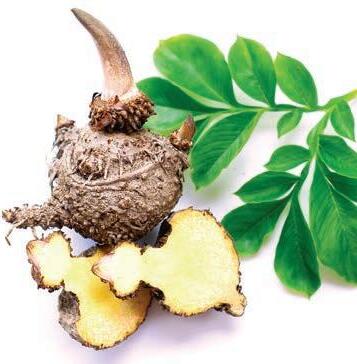
2 minute read
Fit 'n Fiber Prebiotics
If you get confused about probiotics and prebiotics, you are not alone. It’s easy to mix up these terms. The important thing to remember is that both are essential for the health of your body.
To be clear, probiotics are supplemental good bacteria that maintain balance of your body’s microbe population, whereas prebiotics feed these good bacteria. It’s easy to remember that the “e” in prebiotics is for eat. And the three types of prebiotics in Fit ’n Fiber happen to be food that good bacteria eat and thrive on.
Advertisement
Acacia Fiber (Gum)
The acacia tree (Senegalia senegal) secretes a gum that has been used for thousands of years in African-Middle Eastern countries as traditional medicine, especially for stomach ailments. Acacia gum is a polysaccharide made primarily of arabinose and galactose, a carbohydrate combination of two monosaccharide sugars that provides soluble fiber.
A study featured online at the National Library of Medicine (July 2021) showed how acacia gum can manipulate the gut microbiota. It ferments in the colon and promotes the proliferation of specific good bacteria that play a role in changing intestinal pH to inhibit the pathogenic bacteria that can cause an imbalance in the gut (dysbiosis).1
Along with modulating good bacterial growth, acacia gum fuels good bacteria to produce short-chain fatty acids that maintain gut pH levels and provide body energy.

Konjac Fiber (Tuber)
The tubers of the konjac plant (Amorphophallus konjac), which are called elephant yams, have been used as both food and traditional medicine for centuries in Asia. The prebiotic fiber in konjac tubers is known as glucomannan, a polysaccharide comprised of lucose and mannose.
Glucomannan forms a viscous, fermentable fiber that feeds good bacteria, supporting their actions for maintaining good health. Some of the beneficial results of glucomannan revealed through human studies include boosting the growth of good bacteria, promoting weight loss and generating short-chain fatty acids.2


As a main source of energy for the human body, butyric acid is one of the short-chain fatty acids that is produced from the bacterial fermentation of glucomannan.
The seeds of the plant contain tissue made up of galactose and mannose, creating a polysaccharide that becomes gel-forming fiber when ingested. Good bacteria in your microbiota feast on this soluble fiber from guar gum.

A study published in Nutrients (May 2020) showed that guar gum improved both the composition and function of the microbiota. The results included increased growth of beneficial bacterial species, reduced presence of harmful bacteria and improved intestinal wellbeing and bowel function.3
Guar Gum
The guar plant (Cyamopsis tetragonoloba) is an edible legume that is also valuable for crop rotation, given its symbiotic relationship with the nitrogenfixing bacteria in soil.

Among the Fit ’n Fiber mix of beneficial fiber and herbs, one serving delivers 8 grams of prebiotic f ood for good bacteria and the ones you add to your microbiota when taking the probiotics in FloraFood.
(See page 12 for more about probiotics.)







